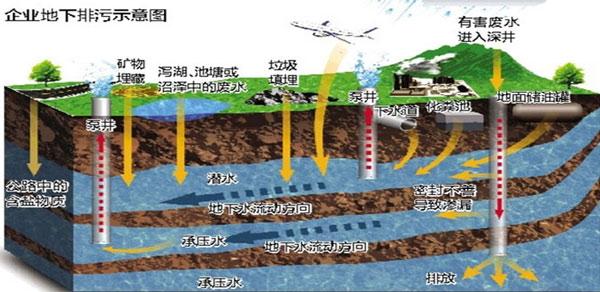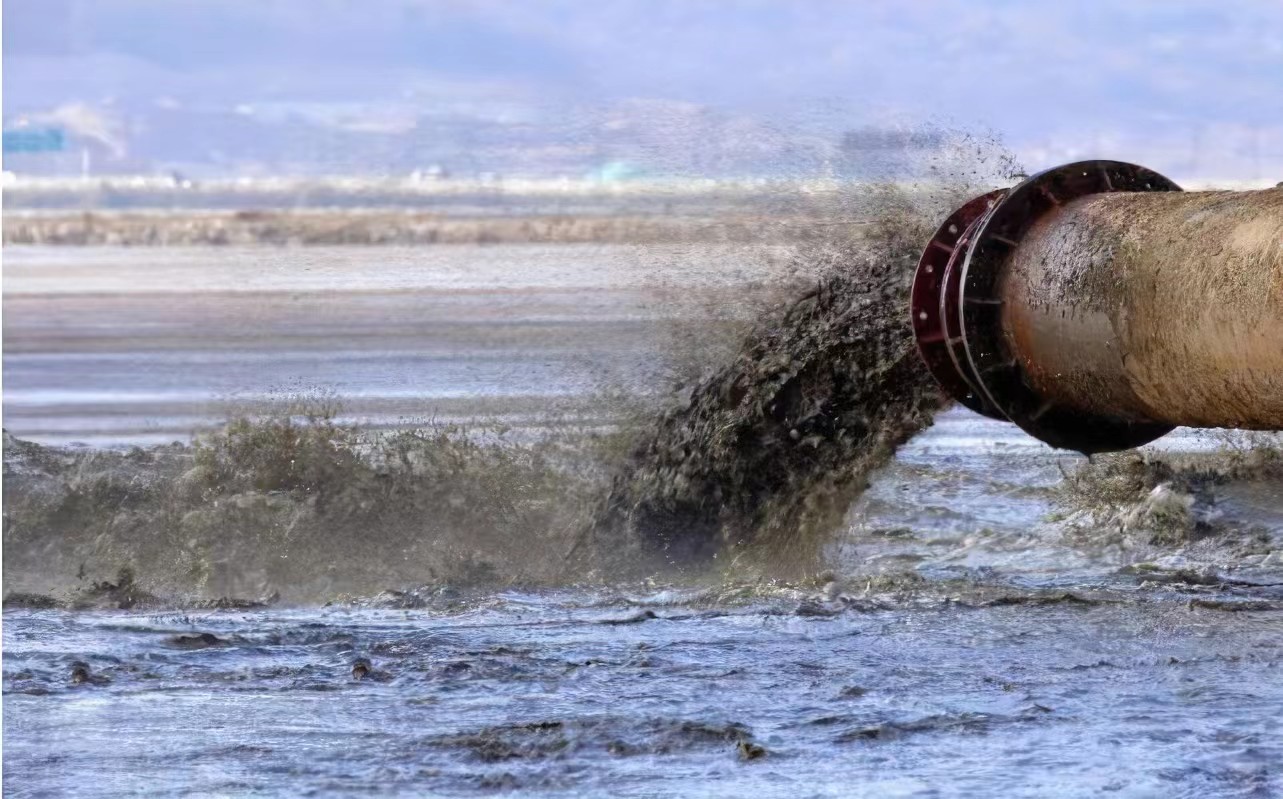Definition
Water pollution is water that pollutes the environment by reducing or losing the use value of water caused by harmful chemicals. Acids, alkalis, oxidants, as well as compounds such as copper, cadmium, mercury, arsenic, benzene, dichloroethane, ethylene glycol and other organic poisons in sewage will poison aquatic organisms and affect drinking water sources and scenic landscapes. When the organic matter in the sewage is decomposed by microorganisms, the oxygen in the water is consumed, affecting the life of aquatic organisms, and after the dissolved oxygen in the water is exhausted, the organic matter is anaerobic decomposed, producing unpleasant gases such as hydrogen sulfide and mercaptan, which further deteriorates the water quality.
Types of Water Pollution
1. Surface water pollution:
Surface water includes water that occurs naturally on the earth's surface. They include lagoons, rivers, oceans, and lakes. Contamination of this water characteristic is caused by the dissolution or mixing of water with contaminants. It can be accidental, such as an oil spill in the ocean, or it can be intentional, such as industry discharging waste into a river or ocean.
2. Groundwater Pollution:
This occurs when harmful chemicals and particles imposed on the ground by humans are infiltrated into the ground by rainwater. Contaminants contaminate groundwater features, such as underground rivers and waterbeds. As a result, wells and boreholes can become contaminated. The most common cause of this type of pollution is the use of pesticides and fertilizers on farms.

3. Chemical pollution:
Chemicals are the most common type of water contaminant. They affect both surface and groundwater bodies. Industrial and agricultural activities are the main causes.Solvents and metals used in industry can pollute rivers and lakes. The use of pesticides to control weeds, insects, and fungi on farms is another cause of soil contamination. Oil spills also lead to chemical contamination.
4. Nutrient Contamination:
Although nutrients are essential for plants and aquatic life, too much of them is also dangerous. Wastewater and fertilizers have a lot of nutrients that plants need to grow. As a result, when they eventually fall into the water, it causes vegetation and algae on the surface of the water to grow quickly and uncontrollably. This can lead to clogged water filters and contaminated drinking water. It also consumes all oxygen, leading to the destruction of marine life.
Reasons
1. Insufficient awareness of water conservation:
Water scarcity occurs when the water demand of a region is greater than the capacity of the water resources, which is known as water scarcity, and in various regions of the world, due to the expansion of industry and the rapid growth of the population, the water demand has reached a large proportion. The exploitation and contamination of groundwater was the cause of growing economic and political problems in many countries, and in May 1982, a special session was held in Nairobi to commemorate the tenth anniversary of the United Nations Conference on the Human Environment and the Nairobi Declaration was issued. In the decade from Stockholm to Nairobi, the conflict between deteriorating water quality and water scarcity became more acute due to population growth and economic development. About two-thirds of the world's water is used for agriculture, which is mainly used for irrigation to increase food production. The world's industrial water consumption is growing much faster than agricultural water consumption. And with the development of industrialization, a significant increase in industrial water consumption is inevitable. Coupled with population growth and improved living standards, the world's urbanization process has accelerated, and the water supply for urban living has increased dramatically. All of this has greatly increased water consumption, but irrational human activities are one of the main causes of water scarcity. Therefore, people should strengthen the protection of water resources and raise their awareness of water resources.
2. Pursue economic benefits while ignoring ecological benefits:
Economic benefits must rely on social benefits and ecological environmental benefits to escort. Rather less, but better. Economic and social development should not come at the expense of social and environmental benefits. In recent years, the international community has paid great attention to the issue of ecological and environmental benefits. Attaching importance to the benefits of the ecological environment, creating an ecological civilization, and highlighting green environmental protection have become a new concept in contemporary China. From a long-term point of view, ecological and environmental benefits are the premise of social benefits and economic benefits. Social benefits without ecological and environmental benefits are harmful and not sustainable; Economic benefits without ecological and environmental benefits are also flashy, and they need to be greatly discounted, and even the gains outweigh the losses. This is our guiding ideology for correctly understanding economic and social benefits.
3. There are laws that are not followed, law enforcement is not strict, and the legal system related to water is not perfect:
At present, China's laws and regulations are not perfect, lack of relevant publicity, so that people do not realize the importance of water conservation, for this should strengthen the publicity of laws and regulations, through publicity can improve people's awareness of water conservation, take the initiative to participate in water conservation work, and ultimately achieve the purpose of improving the utilization rate of water resources.
Effects
1. Harm to the environment:
Leading to the reduction or extinction of organisms, reducing the value of various environmental resources, and destroying the ecological balance.
2. Harm to production.
The polluted water will reduce production because it cannot meet the requirements of industrial production or agricultural irrigation.
3. Harm to people.
If people drink contaminated water, it will cause acute and chronic poisoning, cancer, infectious diseases and other strange diseases. The sensory deterioration caused by contaminated water will cause inconvenience to people's lives and bad emotions.

Causes
2007 Water pollution in Shuyang,Jiangsu
2007 Taihu Lake water pollution incident
2006 Arsenic pollution incident in Yueyang, Hunan Province
2006 Baiyangdian Fish Dead Incident
2005 Major water pollution incident in Songhua River
2005 Chongqing Qihe River water pollution
2005 Cadmium pollution accident in Bac GiangPuyang
2004 Tuojiang "3.02" catastrophic water pollution accident
Prevention and control measures
1. Strictly control point source pollution and implement total pollutant discharge control
For the discharge of industrial and municipal waste and sewage, it is necessary to strengthen management and discharge up to standards. On the one hand, it is necessary to increase the punishment of enterprises that exceed the standard and discharge pollutants, and on the other hand, they can also use the collected sewage discharge fees and emission right transaction fees to set up special funds to support the construction of sewage treatment facilities and reduce the economic pressure on enterprises to control pollution. Measures combining rewards and punishments should be adopted to fully mobilize the enthusiasm and sense of responsibility of enterprises in pollution control.
2. Comprehensive planning, rational layout, and comprehensive regional management.
The problem of water pollution should be taken into account when formulating regional planning, urban construction planning, and industrial zone planning, and preventive measures should be taken against possible water pollution. Eliminate the arbitrary discharge of industrial wastewater and urban sewage, and stipulate standards. Wastewater in the same industry should be treated centrally to reduce the number of pollution sources, facilitate management, and finally have a plan to treat the polluted water body.
3. Strengthen monitoring and management, and formulate laws and control standards.
First of all, set up national and local environmental protection management agencies, implement relevant environmental protection laws and control standards, coordinate and supervise various departments and factories to protect the environment and protect water sources. Then the relevant laws and regulations are promulgated to formulate specific regulations for the protection of water bodies and the control and management of water pollution sources.
- Pollution Waterpollution water pollution tackling china water regulations pollution solve water pollution measures solve water pollution tackling policy water pollution resource water china pollution policy combat water pollution research water on pollution china solve water pollution water china in
